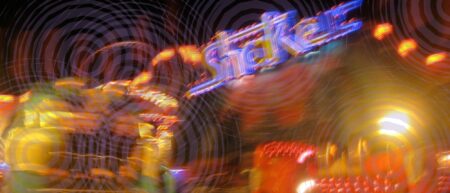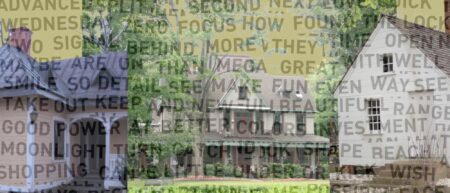Earlier this spring, TRUE asked my wife, the poet and essayist Aimee Nezhukumatathil, and I to interview each other about life, writing, and marriage. We gathered up our computers and decided the best way to tackle a project like this was to sit together on our back patio, in the warm but breezy Mississippi mornings, and have a conversation that would be typed but still feel like we were talking so we could play off each other’s questions and answers.
Of course, that was the plan, but the real peek into our lives involved being dive-bombed by hummingbirds and protective cardinal parents, our children (ages 11 and almost 8) joining us to ask to 1) go to the pool, 2) for a popsicle before breakfast, and 3) see if they could have a water balloon fight. And that’s all before 9 a.m. on a given summer day in our household. So you can see why this interview took place over several of those mornings to get fully finished, and here——at last, on the cusp of our thirteenth wedding anniversary——is a gathering of scarlet milkweed and an offering of a small behind-the-scenes look at how we’ve made the biggest collaboration of each of our lives work and thrive.
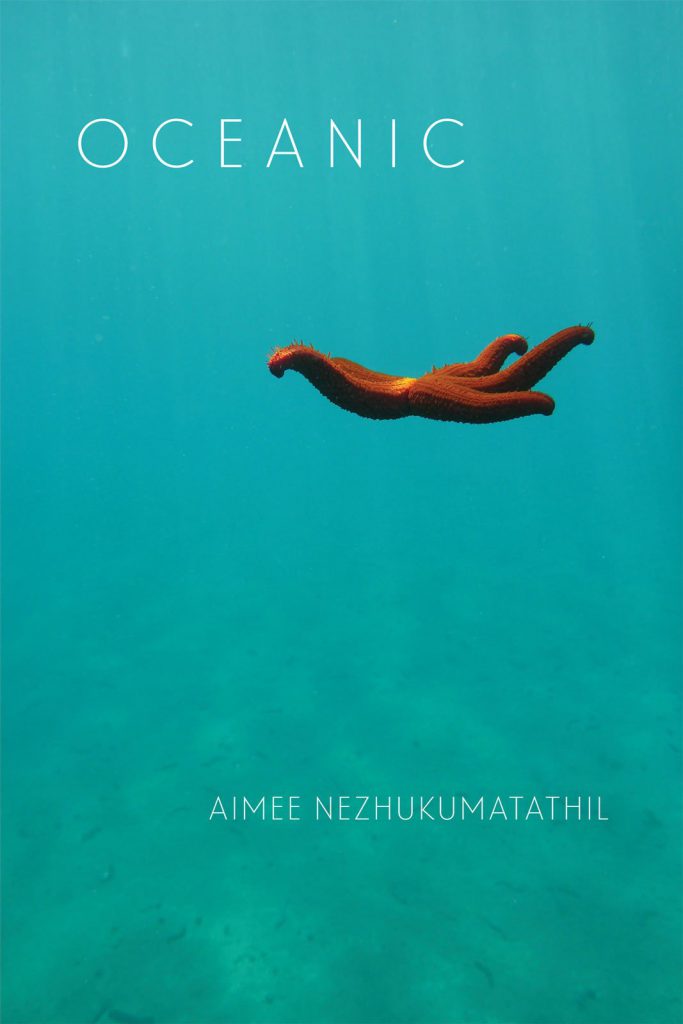 Aimee is the author of four full-length collections of poems, including Miracle Fruit, At the Drive-In Volcano, Lucky Fish, and most recently Oceanic out this year. My first book, Exploded View: Essays on Fatherhood, with Diagrams also came out this year, so our household has seen its share of chaos as we held two book launches, negotiated two travel schedules, and finished up with two full-time teaching schedules. We both teach at the University of Mississippi located in the heart of Oxford.
Aimee is the author of four full-length collections of poems, including Miracle Fruit, At the Drive-In Volcano, Lucky Fish, and most recently Oceanic out this year. My first book, Exploded View: Essays on Fatherhood, with Diagrams also came out this year, so our household has seen its share of chaos as we held two book launches, negotiated two travel schedules, and finished up with two full-time teaching schedules. We both teach at the University of Mississippi located in the heart of Oxford.
To begin, I asked Aimee about her favorite part of being married to another writer.
Aimee Nezhukumatathil: Ha——starting with a trick question. The key for me is to not make readers’ eyes roll, so I will try hard to focus because all I want to do is crack open a LaCroix and sit here and bird watch with you. Oops—too late. There go the readers’ eyes!
But seriously, I love that we can talk books and poems and stories and essays with each other—not our own, though that is definitely a plus because we trust each other as first readers. But I love that I can say “drop what you are doing and read this opening story!” and we can talk about it once the kids go to bed. Or I can show you a stanza from a poem I just encountered and you can also genuinely marvel at it too. I like that you delight in reading.
Dustin Parsons: My favorite part is when you stumble upon a stanza or a line from something and read it out loud to me. It can be quiet and we are both reading something after the kids go to bed, then I hear you just start reading from whatever book you have in your hands and I know it is meant for me, and that makes me feel so at home! And a lot of what triggers new essays for me is that exchange we have with one another. The exposure I get from your reading is what actually creates my reading list many times!
We know a lot about each other’s writing process, and about each other’s work, but I don’t know what kinds of work influenced specifically this most recent book of poems, Oceanic. I think most people who know you or know your work could guess you are a voracious reader, but what other influences helped you create the poems that appear in Oceanic?
AN: True——I read lots, but c’mon you are the big reader in the family. That said, I travel lots and am always taking notes or going to museums/aquariums/art exhibits/trying to stay outside as much as possible, which is a lot easier to do in Mississippi. And I love the heat. I do all of this not with the express purpose of mining material, but because that art and being outdoors enrich my life and hopefully, our kids’ lives. Simply put, there is no lack of subjects to write about and I have to admit I get testy when I hear people say they have nothing to write about.
Can you talk a little about how you collected these essays together and arranged the Table of Contents just so? Our manuscript-making processes are similar in that we both write more (as in almost double) what we actually include in a manuscript, but how did you make those decisions on what to include or cut for Exploded View?
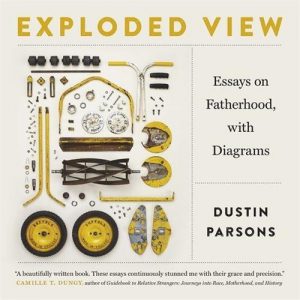 DP: These essays were the product of nearly fifteen years of writing, so sorting through all of this was the big first task. Our boys are a constant joy to me, and also a constant influence on my life. They dictate the time I have to work, they in many ways, especially when they were younger, dictated the things I would do during the day, so they were a natural subject. But to understand what I was doing as a father, I needed to look a little closer at what I’d written about my own father.
DP: These essays were the product of nearly fifteen years of writing, so sorting through all of this was the big first task. Our boys are a constant joy to me, and also a constant influence on my life. They dictate the time I have to work, they in many ways, especially when they were younger, dictated the things I would do during the day, so they were a natural subject. But to understand what I was doing as a father, I needed to look a little closer at what I’d written about my own father.
But I didn’t arrange them in chronological order. It didn’t feel right to do that, so I started looking at the subjects of the essays. Some of them were stories I’d been told, some were written in a certain form, and others were traditional and broader in experience. So I tried to position essays that would give the reader a similar feeling together. When the forms of the essays are so untraditional it is nice to have something familiar to hold on to.
I know you do this thing where you lay out all the poems to a manuscript on the floor and puzzle over order, too. It is such a fun sight to see all those pages on the floor, and watching you step over the first row and pull a poem, or place it in another row, but as a prose writer I rarely have so much material to contend with. How do you do it and what are you looking for when you start ordering your own books?
AN: Weeding is always the easiest. When they are printed and spread like that, culling the poems that just aren’t finished or don’t have enough surprising metaphors or that simply bore me is so easy. The next round is when I start looking for conversations (or arguments!) between poems—it’s absolutely my favorite part of putting together a book.
What was the hardest essay to write, in terms of facing subject matter, and what essay was a total joy or delight—like you could feel yourself smile as you were even drafting it?
DP: The hardest one is a tie. “Drop Off” and “How to Make a Cardinal in 5 Easy Steps” were the most difficult. They were both full of truths I didn’t really want to face, but knew I had to. School shootings were on my mind for a long time after Sandy Hook, and “Drop Off” was my way of responding to it instead of living in fear. “How to Make a Cardinal in 5 Easy Steps” wasn’t something I was scared of, but something I didn’t think I had the vocabulary to talk about before. So the difficulty was emotional and also intellectual.
As far as a joy, maybe the one that made me most happy consistently as I was writing it was “Loose Ends.” Mostly it was because it was about you, about a time when I’d done something stupid, but how easily and quickly you knew how to do the right thing. And about how it all ends up working out in the end. Also, it had our late miniature dachshund Villanelle in it. Every time I read it in public or just for myself, I think of you and her hanging out on the couch in our first house, and I still smile.
Away from writing for a bit, I’ve just gotten my first taste of people reading my book. I know you have been through this several times, so I’m especially curious to hear it from you: What is your favorite part of having your book out in the world?
AN: Writing is mostly solo for me. Of course I have my reader-pals and you most of all to talk through snags in drafts, but having the finished book out in the world is pretty magical because it’s a chance to connect with people . It’s just such an honor to have anyone not related to me pick it up and read it and honestly one of my favorite parts is when someone from the other side of the planet writes to say how much a poem or stanza meant to them—to have that small connection with a stranger. On a material note, I love buying new signing pens because I’m obsessed with school supplies. But also I had a lifetime of people making fun of my last name or wanting me to shorten it so I admit it still makes me so gleeful to sign my full name in a book.
Since we’re finishing this up on the cusp of a big family trip to Greece for the month, and because we have traveled to several countries together (India, Philippines, and Switzerland among others) could you talk just a bit about travel has influenced your writing?
DP: Oh wow, you asked me this just as I’m packing up my notebooks and pencils and pens for the trip. That is such a fun part of my packing, and really puts me in the mindset for how travel affects my writing—it is really my favorite part to think about the goals I have when I go somewhere! For this trip, for instance, there is a big fiction project I’m trying to finish a first draft of, but I’m also looking forward to exploring the ruins in Greece. Most of the time, travel influences my physical writing habits——I journal and write by hand much more. I draw more. I find that new places influence the forms of my essays and fiction. I’m trying to get a “feel” for a place I’m not familiar with. For instance, when we went to the Philippines together I wrote an essay complete with a map in my mind of the islands themselves. It took me a great deal of time to realize how I was going to pull that off, but I knew from the moment we went to Hundred Islands National Park that there would be a map in the essay somehow. For Greece last year, it was a call and response essay. And of course there is the research I do and the ways that field work becomes discovery and adds what I hope is my surprise and delight and curiosity to the essay for the reader.
Thanks so much for talking with me about writing. It was so fun to ask you questions about what we do, and discover things I think I took for granted before.
AN: You are most welcome. This was super fun, actually! Thank you to the folks at TRUE and Proximity for making this happen. Now let’s hurry up and finish packing so we get to the next adventure.
 AIMEE NEZHUKUMATATHIL is professor of English in the University of Mississippi’s MFA program. Her newest collection of poems, Oceanic, was released with Copper Canyon Press in April 2018. She is also the author of the forthcoming book of illustrated nature essays, WORLD OF WONDER (2019, Milkweed), and three previous poetry collections: Lucky Fish (2011), At the Drive-in Volcano (2007), and MIRACLE FRUIT (2003)—all from Tupelo Press. Her most recent chapbook is Lace & Pyrite, a collaboration of nature poems with the poet Ross Gay. She is the poetry editor of Orion magazine and her poems have appeared in the Best American Poetry series, American Poetry Review, New England Review, Poetry, Ploughshares, and Tin House. Honors include a poetry fellowship from the National Endowment for the Arts and the Pushcart Prize.
AIMEE NEZHUKUMATATHIL is professor of English in the University of Mississippi’s MFA program. Her newest collection of poems, Oceanic, was released with Copper Canyon Press in April 2018. She is also the author of the forthcoming book of illustrated nature essays, WORLD OF WONDER (2019, Milkweed), and three previous poetry collections: Lucky Fish (2011), At the Drive-in Volcano (2007), and MIRACLE FRUIT (2003)—all from Tupelo Press. Her most recent chapbook is Lace & Pyrite, a collaboration of nature poems with the poet Ross Gay. She is the poetry editor of Orion magazine and her poems have appeared in the Best American Poetry series, American Poetry Review, New England Review, Poetry, Ploughshares, and Tin House. Honors include a poetry fellowship from the National Endowment for the Arts and the Pushcart Prize.
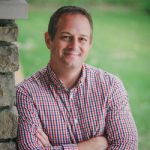 DUSTIN PARSONS is the author of Exploded View: Essays on Fatherhood, with Diagrams (University of Georgia Press 2018). He has an MA from Kansas State University and an MFA from Bowling Green State University. He has previously served as the non-fiction editor of The Mid-American Review. Awards for his writing include an Ohio Arts Grant and a New York Fine Arts grant in creative non-fiction, the 2013 American Literary Review Prize in fiction, the 2014 fiction prize from The Laurel Review and a “notable” in the 2014 Best American Essays. He was awarded a residency fellowship at Wyoming’s Brush Creek Foundation of the Arts. He teaches creative writing workshops and courses in American literature at University of Mississippi. He lives in Oxford with his wife, the poet Aimee Nezhukumatathil, and their two wily boys.
DUSTIN PARSONS is the author of Exploded View: Essays on Fatherhood, with Diagrams (University of Georgia Press 2018). He has an MA from Kansas State University and an MFA from Bowling Green State University. He has previously served as the non-fiction editor of The Mid-American Review. Awards for his writing include an Ohio Arts Grant and a New York Fine Arts grant in creative non-fiction, the 2013 American Literary Review Prize in fiction, the 2014 fiction prize from The Laurel Review and a “notable” in the 2014 Best American Essays. He was awarded a residency fellowship at Wyoming’s Brush Creek Foundation of the Arts. He teaches creative writing workshops and courses in American literature at University of Mississippi. He lives in Oxford with his wife, the poet Aimee Nezhukumatathil, and their two wily boys.
